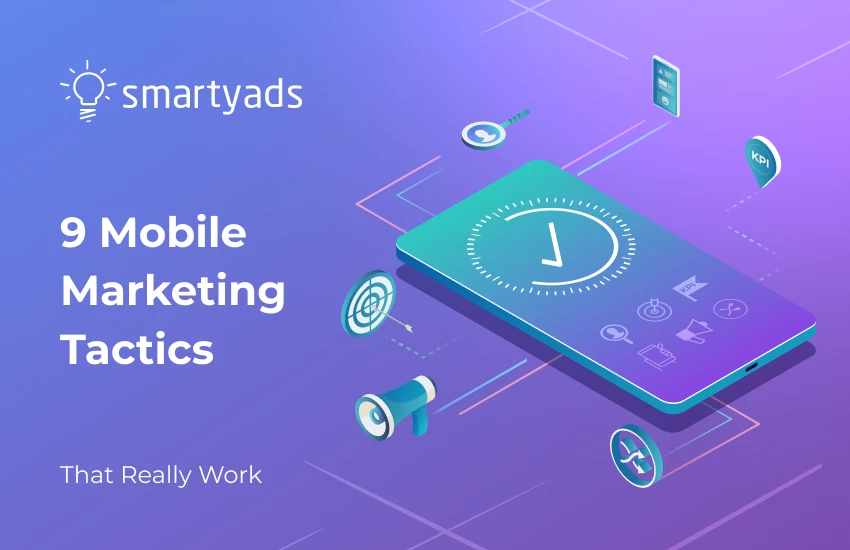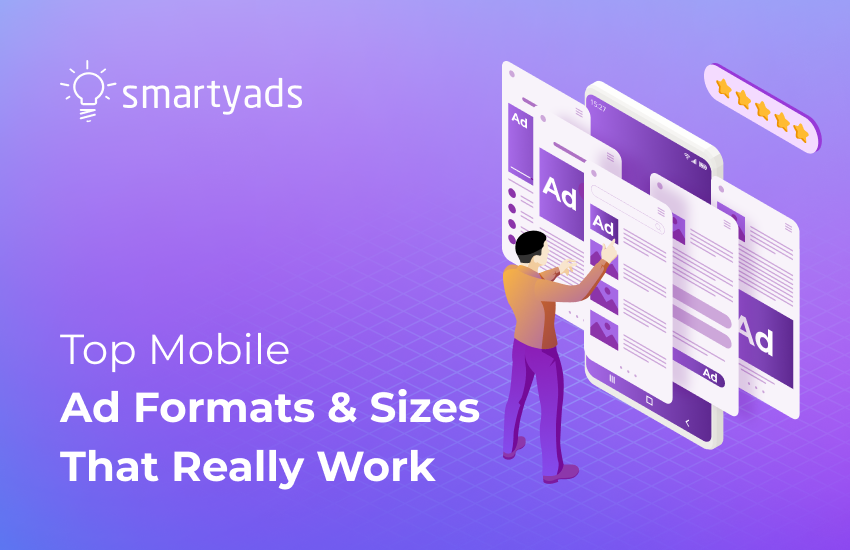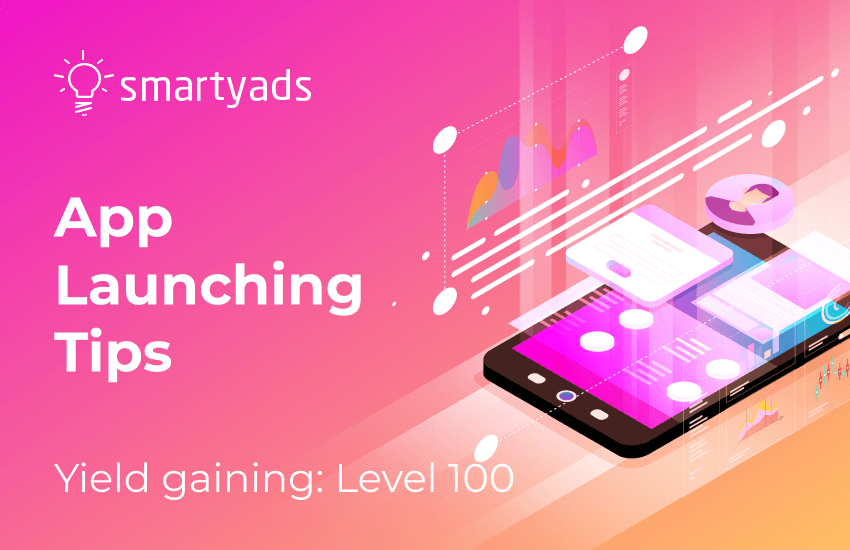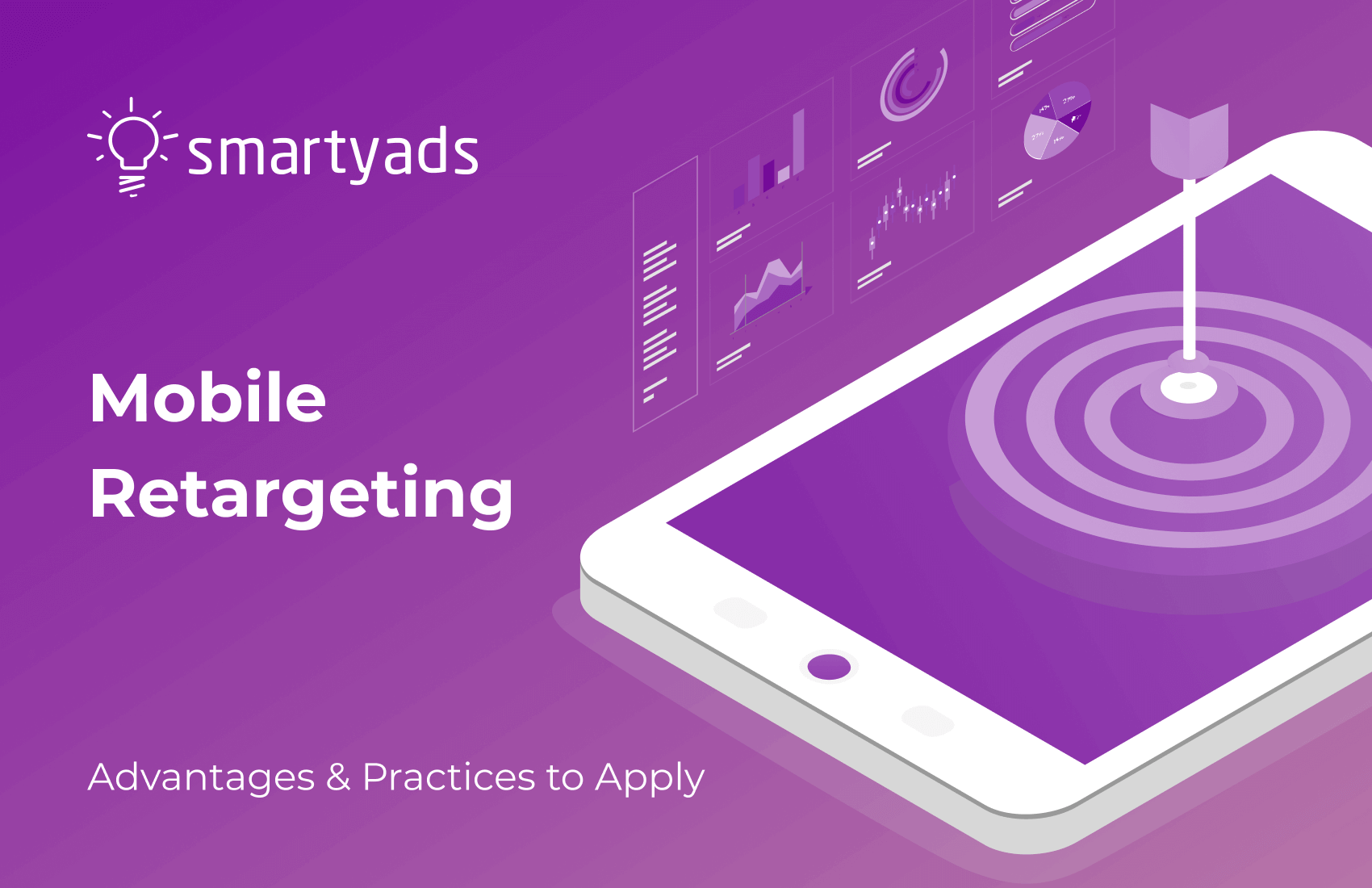Mobile marketing strategies are not what they used to be a decade ago. Advertising techniques have gone omnichannel: smartphones, tablets, and small wearables have opened the gateway to personalized communication between brands and customers.
Given that now the mobile market is oversaturated and characterized by fierce competition, it becomes harder for brands to stand out. However, in case you combine the right mobile marketing methods and tips that prove efficiency year over year, your mobile marketing campaigns have all the chances to take off. So in this article, we are going to delve into the realm of mobile marketing trends and the core tactics that will enable you to stand out from the competition and increase your ROI. Let’s get started!
What is mobile marketing?
Before we enveil types of mobile marketing strategies to elevate your business game, let’s start with a core mobile marketing definition.
Mobile marketing refers to the strategic digital marketing process of promoting brands, products, or services via mobile devices such as smartphones and tablets. It encompasses a variety of techniques and channels. Mobile marketing examples include mobile apps, push notifications, social media advertising, mobile-optimized websites, SMS, and location-based marketing.
The primary goal of mobile marketing is to reach the target audience and engage with them on their mobile devices through delivering personalized and relevant content and thus increasing conversions. As the usage of mobile devices keeps prevailing in our daily use, mobile marketing is now an indispensable part of an overall marketing strategy.

Mobile marketing statistics: here’s why everyone needs it
Let's take a brief look at the latest mobile marketing facts that will show you the paramount importance of mobile marketing and why you should channel all your efforts into it.
- Last year (2023) the number of smartphone users was hovering at the bar of 4.2 billion;
- By the end of this year (2024), the number of smartphone users will reach 4,9 billion and will continue to grow further;
- On average, online users spend 6.4 hours browsing the internet per day, and 58% of this time is attributed to mobile devices;
- Mobile advertising spending worldwide will reach 400 billion dollars in 2024;
- 19% of the US marketing budget is allocated to mobile advertising;
- Over half of global web traffic occurs on mobile, making this a key platform for advertisers;
- 80% of Internet users own and regularly use their mobile gadgets;
- 70% of people who purchase something online, turn to their mobile gadgets before making a final purchase;
- 89% of people who had a good shopping user experience on mobiles are likely to recommend the service to their friends and relatives.
9 Tips for choosing a successful mobile marketing strategy
Here are other striking mobile marketing statistics. The total number of smartphone users worldwide is predicted to continuously grow between 2024 and 2029 by 1.5 billion users. As a result, by 2029, this number will attain 6.4 billion users.

If you are already entertaining yourself with the idea of developing your own mobile apps, hold your horses, this market is uber-competitive and only 0.01% of apps actually become financially successful. If you don’t have a strong and competitive application to advertise in, professionals suggest using programmatic advertising. This way you can advertise in all apps whose owners are willing to monetize their inventory on a per-impression basis.
Mobile marketing strategies aren’t made overnight, in order to create one for your company you need to focus on individual objectives, needs, target audience, and industry specifics. Let’s move on to 10 key tactics that will take your mobile marketing efforts to a whole new level.
1. Find the right buyer persona for your marketing strategy
A buyer persona is a theoretical representation of your potential customer. Marketers usually create several buyer personas for several segments of customers filling in profile information with the following details: age, occupation, job challenges & daily challenges, needs, goals, preferred type of communication, etc.
These details make it easier for the marketer to understand e.g. how much time a customer spends with mobile gadgets during the day, how, and as a result, develop suitable mobile marketing approaches.
There’s no definitive answer to the question — “How many buyer personas should I create”? The number will depend on the specifics of your business and the industry in general. Most companies have at least two or three buyer persona profiles. You should not go too broad in the description, it is definitely worth trying to narrow the scope when we talk about one buyer profile.
2. Define what goals your mobile ads should achieve
Mobile marketing methods can be used to achieve different goals: clicks, views, conversions, installs (for apps), or any other action (registration at the website, filling up the form, leaving feedback, etc.). If you don’t define your goal beforehand, you won’t be able to measure it after your advertising campaign ends. If it is hard for you to determine the goal, assemble your marketing team and together give answers to the following questions:
- How do we currently adapt our product or service to the mobile market?
- What do you want to achieve by involving mobile marketing campaigns in your plan?
- What are your expectations of mobile marketing (per channel)?
- Who are your key buyer personas? Are these personas different for each product category? Do they use mobile differently?
- How much advertising budgets are you planning to invest in mobile advertising?
- What advertising formats are you planning to use to make the user experience less intrusive and more engaging?

3. Establish KPIs
Advertising and marketing tools have a definitive set of mobile marketing metrics that you can track and measure while running mobile campaigns. To understand what you need to optimize in the future, take a look at the following KPIs.
- Engagement. If your primary goal is to raise engagement among audiences, use highly interactive ad formats e.g. rewarded or playable videos. Engagement rate is not always easy to measure, however, you can apply tracking tags within creatives that will tell you how exactly users interact with your ad units.
- Acquisition. For better acquisition don’t forget to include in your ads calls to action. To measure the acquisition rate, it will be enough to just divide all marketing expenses invested in the channel by the number of new customers acquired with this channel.
- Brand awareness. Make sure to select memorable ad formats like video ads that showcase products or services in detail. Brand awareness can be measured in the number of views on demand-side platforms. Furthermore, on the demand-side platform like SmartyAds, you will also be able to generate daily reports across a variety of metrics: clicks, conversions, spending, etc.
4. Don’t forget about mobile-friendly website
According to the latest reports, 67% of mobile users are more likely to buy a company’s product or service if they have a mobile-friendly website.
A mobile-friendly website allows your users to adequately browse the website on all devices where it is opened. If you don’t optimize the website for mobile you put at risk at least 35% of potential buyers. Plus, this is key to a convenient and enjoyable user experience and one of the most important Google ranking factors
3 signs that your website is mobile-friendly:
- The content of the page isn’t wider than the mobile display;
- The content of the page fits both the width and height of the mobile screen;
- The content is loaded quickly and without errors.
Google also created a tool to help webmasters verify if the correctness of the website displays correctly on all devices.
5. Incorporate digital advertising into your mobile marketing approaches
More than 91% of mobile phone owners state that they normally decide on purchasing products or services after watching relevant ads. Programmatic advertising tools will help you make your ads appear relevant to every user. This type of media buying accounts for at least 68% of global media ad spend.
Here’s what is programmatic advertising and how it works in a nutshell: the user’s cookies indicate that they are frequently browsing car-related web sources. When the same user opens a new website/app, their cookies are transmitted from the publishers (SSP) to advertisers (DSP). Based on the targeting settings advertisers set in DSP (age, geo, language, etc.) the platform decides whether to bid on an ad impression from a publisher or not. If it’s “yes” automatic bidding occurs and the winner (who offered the highest bid) gets their ad served right inside of the app (or on the website). After a few milliseconds, the user sees the relevant ad.
The benefits of programmatic media-buying for mobile campaigns
- Relevance. Technology allows you to show ads to the right customers on different mobile gadgets.
- Automation. It also allows you to buy ad slots in real time thanks to the automation of the process (which positively affects ROI and saves media budgets).
- Targeting. Geo-targeting configured on mobile DSP helps advertisers to run geo-marketing campaigns, e.g. advertise to the users when they are a few meters away from the brick-and-mortar store.
- Formats. On DSPs, you can find an abundance of mobile-friendly ad formats specially tailored to satisfy particular campaign goals.
6. Diversify your media-mix
It’s time to think about mobile users and how to delight them and encourage views, clicks, or interactions through diverse content formats.
- Push notifications. In case you plan a geo-marketing campaign, there’s nothing better than push notification ads because they can pop on the screen right when your customers pass by near the shop. The push notification should be short, concise, and have a vivid CTA button in order to elicit high conversions and click-through rates.
- Playable videos. Playable ads work well when you need to demonstrate the mobile game in detail and generate lots of installs. It appears on the screen in between the game or during certain logical gameplay intervals and features a little demo game that the user can try.
- Rewarded videos. Rewarded video ads are preferred by over 70% of mobile gamers since they provide value in exchange for ad-watching. Rewarded ads can only work in the in-app environment, they boost engagement and ad completion rate. These ads typically warn the users “Watch this ad and you will receive a bonus”: the free game hint, coins, free hour of music listening, or whatever can be valuable.
7. Deliver personalized content
As users become more and more sophisticated, they also are getting more and more demanding and exigent about the content they engage with. To impress and convince users to choose a specific service or product, it’s paramount to have a deep understanding of their preferences and behavior.
The digital landscape is saturated with advertising, therefore tailoring content based on specific individual characteristics is crucial to achieve success in your marketing game.
Aim at delivering relevant content of real value that resonates and speaks to the users’ needs and wishes to grab the user’s attention. It can be, for instance, a personalized email, app notification, product recommendations, or offers based on their browsing history. This approach will build trust, nurture stronger connections, and improve the overall user experience thus generating better engagement and conversion rates.
8. Set up advanced targeting
If you want to achieve exceptional results in your mobile marketing, leverage the power of advanced targeting options to reach the right audience who will be interested in your services or products. Whether it’s social media platforms or programmatic advertising, most marketing tools enable you to set up targeting with the top level of precision for better results.
What data do you need to connect with the desired audience? You should utilize data such as demographics, location, online behaviors, interests, and other details that can make a difference to get in touch with the right people at the right time.
Advanced targeting techniques can boost the effectiveness of your mobile marketing campaigns and maximize your revenue instead of wasting your marketing budget on an irrelevant audience.
Also, don't forget about mobile retargeting.
9. Continuously analyze your results to improve
There is no better way to learn and improve your marketing activities than based on your previous performance and results. In the dynamic landscape of mobile marketing, it’s crucial to stay flexible and open to continuous improvements and changes.
The great thing about mobile marketing is that it gives you plenty of room for creativity and experimenting. By analyzing your results, you will be able to make informed data-driven decisions and stay ahead of the competition.
Even if you make a mistake, it’s a valuable experience you can use to learn and optimize your marketing performance. Keep tracking and monitoring your KPIs which might include CTR, CTA, CPM, CPL, conversion rates, etc. to easily identify weaknesses and areas for improvement. Also, don’t underestimate the power of A/B testing which can allow you to test your hypothesis and choose the right option to move on with.
To sum up
The benefits of mobile marketing are immense and so is its potential. That’s why marketers all over the world increasingly use this strategy. Mobile marketing tactics can make wonders with your sales, conversions, and user experience as people spend the majority of their time using smartphones. However, to achieve significant results from mobile marketing activities, it’s pivotal to keep in mind these tactics that will reinforce your efforts and grant exceptional performance.
Supporting your mobile marketing strategy with the right automation tools guarantees that you reach potential customers at the right time at the right screen, and with the right message. Luckily, there are a lot of tools for this, but as always, the most important thing before doing anything will be determining what kind of result you want to achieve.
Time to set up an effective mobile advertising campaign. Ready? Register at DSP!





